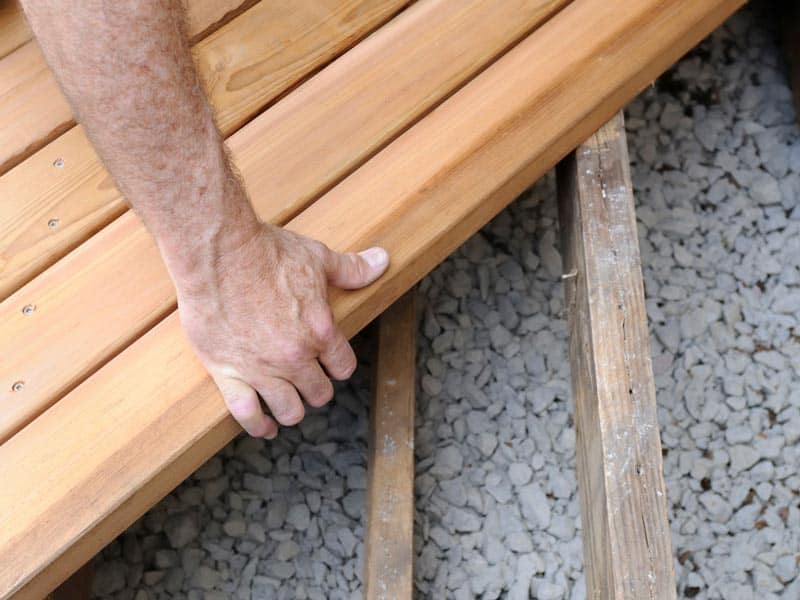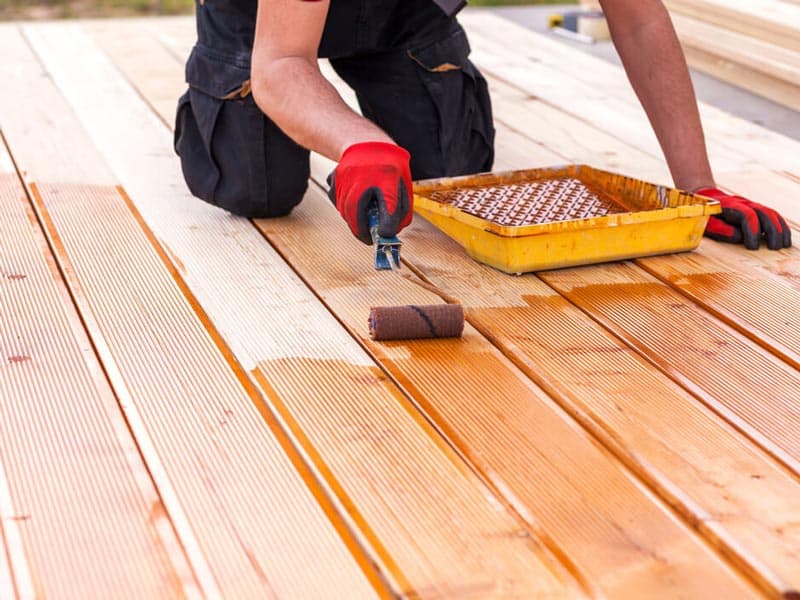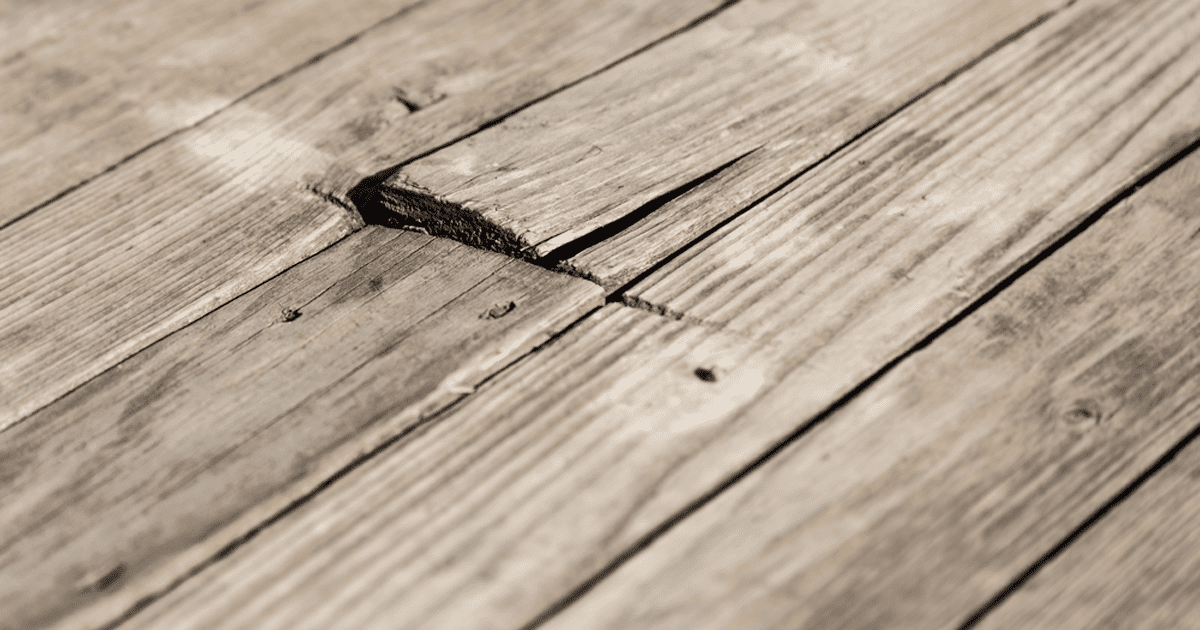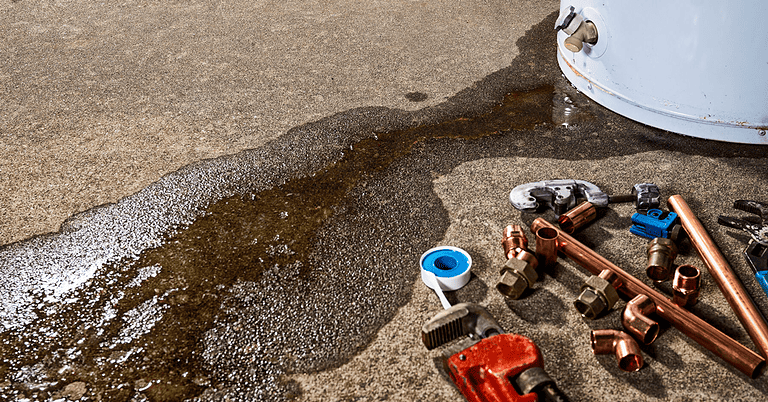Brand New Deck Wood Splitting – What To Do
You’ve just installed a beautiful new deck, but you’re noticing the wood is already splitting. It’s frustrating. Well, don’t worry. We’ll dive into why this happens, how to prevent it, and what steps to take if your deck wood shows signs of damage.
Let’s arm you with practical knowledge and advice based on real-life experience so you’re prepared for everything your deck might throw at you.

Understanding the Causes of Deck Board Cracking
You’ve noticed your new decking is showing signs of splitting and cracking, and it’s got you concerned. This can be due to several factors, like the natural drying process of the deck, pressure-treated lumber reacting to harsh weather conditions or even improper installation techniques.
Let’s delve into these causes in detail so you can better understand what’s happening to your deck and how to address it effectively. (Learn How Many Watts Is A Space Heater)
Deck Drying and Splitting
It’s crucial to properly dry and seal deck boards before installing them to minimize splitting. Understanding the relationship between moisture level and wood drying is vital when dealing with brand-new deck wood splitting. Pressure-treated lumber contains high moisture content initially. If exposed to direct sunlight or heat without proper precautions, rapid drying can occur, leading to splitting. Therefore, ensure your new deck wood isn’t subjected to extreme conditions during installation.
Before proceeding with installation, it’s advisable to stack your treated lumber in a cool, dry place, allowing for air circulation that promotes even drying. Using spacers between the stacked boards will help prevent uneven moisture levels, contributing significantly to decking drying and splitting issues.
Cracking Due to Pressure-Treated Lumber
Pressure-treated lumber tends to expand and contract, which can lead to cracking. This is especially true if the chemicals used in the treatment process evaporate too quickly. Since pressure-treated wood is softwood lumber, it is more prone to board splitting in these fluctuating conditions.
When your deck board starts cracking, it indicates that it is splitting. These splits and cracks affect the aesthetic appeal of your space and its structural integrity. Selecting quality deck lumber right from the start is essential to prevent deck splitting.
However, if you are already dealing with cracking due to pressure-treated lumber, there is no need to panic. It is possible to repair or replace affected boards as necessary. Just remember that regular maintenance plays a crucial role in preventing damage and extending the life of your deck. (Learn How To Use A Joist Hanger)
Weather-Induced Cracking
Weather changes can significantly affect your deck, causing cracks due to the expansion and contraction of the material. This phenomenon, known as field splitting of the decking, often results from weather-induced cracking. Unsealed decking will absorb water during rains or high humidity. Subsequent drying out in the hot sun makes the absorbed water evaporate quickly, causing the decking to split.
These cracks in your deck aren’t merely unsightly but also a sign of weakening the decking structure. The continuous cycle of absorbing water and drying can deepen these cracks and splits over time.
Therefore, regular deck maintenance is crucial to prevent such issues. Seal your deck correctly and ensure it’s adequately shielded from extreme weather conditions for longevity.
Cracking from Improper Installation
Cracking can also result from improper installation, especially when inadequate spacing between the boards or the fasteners are installed too close to the board edges. This mistake could cause the wood in the middle of your deck to crack due to improper installation.
When boards are packed too tightly, they don’t have space to expand and contract with temperature changes. The board couldn’t dry appropriately because water gets trapped, causing it to split days after installation. So keep an eye out for installation practices that can lead to splitting.
The way to prevent this is by ensuring adequate spacing during installation and correctly positioning appropriate fasteners away from board edges. Cracking is also a sign of potential structural issues needing immediate attention.

Prevention Strategies for Deck Wood Splitting
Properly preparing and selecting dry deck boards is crucial when preventing wood splitting on your deck. You’ll need to ensure adequate ventilation underneath your deck, promoting even drying and avoiding moisture accumulation that can lead to cracks.
Further, sealing your deck boards with a quality stain enhances their aesthetic appeal. It plays a pivotal role in warding off cracks by providing an added layer of protection against weather elements. (Learn How To Get Rid Of Mud In Yard)
Preparing and Selecting Dry Deck Boards
You’ve got to ensure that your deck boards are properly dried before installation to minimize splitting and cracking. Preparing and selecting dry deck boards is a crucial first step in wood decking. Choose boards that have had time to dry evenly, away from direct sun, which can cause the wood to shrink rapidly and unevenly. Slowing down the drying process prevents tension within the wood, reducing the chances of cracking.
A quality wood sealer can help lock in moisture and slow this process down further, protecting your investment. Not giving enough time for your deck boards to dry might lead you back to square one, with cracks appearing sooner than expected.
Ensuring Proper Ventilation Underneath the Deck
It’s crucial to provide proper ventilation underneath your deck to maintain consistent moisture levels, which will help prevent the formation of cracks. Begin by ensuring your deck boards are firmly secured and lined up in the middle.
The underside of the deck should be open enough for air to circulate freely, reducing moisture build-up. Installing decking on the bottom can protect the deck from foot traffic damage. If you’re working with an old deck, don’t hesitate to unscrew boards to improve ventilation.
A well-designed drainage system is also a must-have as it sweeps away water that could cause rotting, leading to splitting if not addressed promptly. Remember, every step counts when aiming for a durable and long-lasting deck.
Sealing Your Deck Boards
Sealing your deck boards is crucial in maintaining their appearance and durability, as it helps prevent moisture from seeping into the wood, causing warping and rotting. When it rains on your deck, the water can enter cracks in the wood, penetrating deep into the wood fibers. This process allows the wood to absorb excess moisture, promoting splitting and decay.
To keep your deck looking its best, ensure it’s properly sealed or stained. This enhances its aesthetic appeal and protects the decking from extremes of weather and wear. A well-applied sealant acts as a barrier against moisture entering, helping to prevent splitting over time.
Sealing your deck boards isn’t a one-time task; you should reapply periodically to maintain this protective layer.
The Role of Deck Stain in Preventing Cracks
Applying a high-quality stain to your deck is crucial in preventing cracks. It creates a protective layer that repels water, reducing the likelihood of moisture-induced damage. This is especially important when dealing with brand-new deck wood splitting.
The stain acts as a barrier that allows your deck to expand and contract without causing the wood to rot or the decking to shrink. Without this protective measure, your deck becomes more likely to crack.
Splits can crack further due to exposure to wind and other elements. Therefore, never underestimate the role of deck stains in preventing cracks. It’s not just about aesthetics; it’s about preserving your investment for years of enjoyment outdoors.

Treatment Options for Split Deck Boards
You’ve noticed some unsightly cracks in your deck and maybe even a few damaged boards that are beyond repair. It’s time to roll up your sleeves and tackle these issues head-on. Not only will this restore the aesthetic appeal of your outdoor space, but it will also ensure its longevity and safety.
This discussion will guide you through filling those pesky cracks and replacing any irreparable boards on your deck. We will provide practical advice based on years of experience dealing with these deck maintenance tasks. (Learn How To Get Rid Of Briars)
Filling Cracks in Your Deck
Using epoxy or wood filler can be an effective solution when filling cracks in your deck. However, prevention is critical.
If you’re working with brand-new deck wood that’s splitting, consider what might cause this issue. Poor-quality wood will tend to break easily, significantly, as it expands and contracts due to temperature changes. Also, pay attention to screw holes; if the wood is shrinking near them, it may be a sign of damage.
Should your deck already be damaged, don’t panic. Start by removing loose pieces from the cracks, then fill them with an epoxy or a specially designed wood filler. Secure any loose screws or replace damaged deck screws entirely for best results.
Replacing Damaged Deck Boards
It’s essential to consider replacing damaged deck boards to maintain your outdoor space’s structural integrity and aesthetic appeal. When balcony decking suffers from splitting, it’s usually due to moisture fluctuations, causing wood fibers to expand and contract. This is something wood typically does over time.
To make your deck safe again, start by removing the damaged board. If it’s composite decking, get a similar one for replacement; otherwise, pick pressure-treated lumber resistant to rot and insects. When building decks, align new boards with the old ones for uniformity.
Don’t forget cosmetic decking aspects, either. Sand down the replacement board and apply a matching stain or sealant for enhanced look and longevity. Don’t shy away from a total replacement for severe damage- better safe than sorry!

Choosing Deck Lumbers That Resist Splitting
As you delve into the world of deck construction, understanding the characteristics of various decking materials is critical in preventing split deck boards. While cost-effective and durable, pressure-treated lumber often suffers from splitting due to its chemical treatment process and moisture fluctuation.
On the other hand, hardwoods like ipe have a natural resistance to splitting but come with a higher price tag. Composite materials balance cost and durability without the worry of cracking or splitting.
Pressure-Treated Deck Lumber
You’ve got to understand that pressure-treated deck lumber can expand and contract, causing it to crack as the chemicals evaporate from the wood. These cracks, known in the industry as checks, might look unsettling but are typically harmless. They occur due to variations in moisture content – water vapor causes the fibers to swell, while drying makes them shrink.
Especially if you live in a wetter climate, your deck could rot from the bottom side, which is also exposed to ground moisture. Increased thickness and knotting can exacerbate this issue. Pressure from furniture can lead to more visible checks, too. To protect your deck against these issues, use chromated arsenicals for treatment. This will help prevent decay and insect damage while retaining structural integrity.
Hardwood and Composite Decking Materials
Hardwood and composite decking materials offer aesthetic appeal and increased resistance to cracking and splitting compared to pressure-treated lumber. When wood becomes trapped with moisture, it expands. Eventually, as the moist air escapes, contraction occurs, resulting in unsightly cracks that can mar the appearance of your deck.
To prevent this issue, it is crucial to ensure proper ventilation so that no moist air becomes trapped within the boards. Regularly sweeping away leaves or debris with a broom is also essential, as they can retain moisture. Addressing these maintenance tasks promptly is important because if left unattended, weakened spots could eventually lead to your foot breaking through the deck.
Remember that while hardwood and composite decks may have a higher upfront cost, their durability can save you from costly repairs in the future.
Summary and Key Takeaways
You’ve just invested in a brand new deck and want to protect it from splitting. Understanding the causes is the first step. Whether it’s due to wood drying out unevenly, pressure-treated lumber releasing chemicals during installation, or even pest infestations, each reason has unique preventative measures.
Let’s delve into these key points and practical advice garnered from years of experience to discuss how you can keep your deck looking pristine by preventing the dreaded split.
Keeping Your Brand New Deck From Splitting: A Recap
Let’s recap on how to prevent your brand-new deck from splitting. It’s crucial to follow these steps:
- Dry the boards before installation: Rapid and uneven drying can cause splits in your deck, so let it dry naturally.
- Provide proper ventilation under the decking: Ventilation helps regulate humidity levels, reducing the risk of warping or cracking.
- Seal the wood to maintain moisture equilibrium: Sealing is vital; it locks out excess moisture that could seep into tiny cracks in your deck’s surface.
Also, remember to:
- Pre-drill holes for screws: This reduces stress on the wood.
- Space your boards correctly for expansion and contraction: It’s about nurturing a balance between nature’s elements and your deck materials.
With these measures in place, you’ll protect your investment for years.







